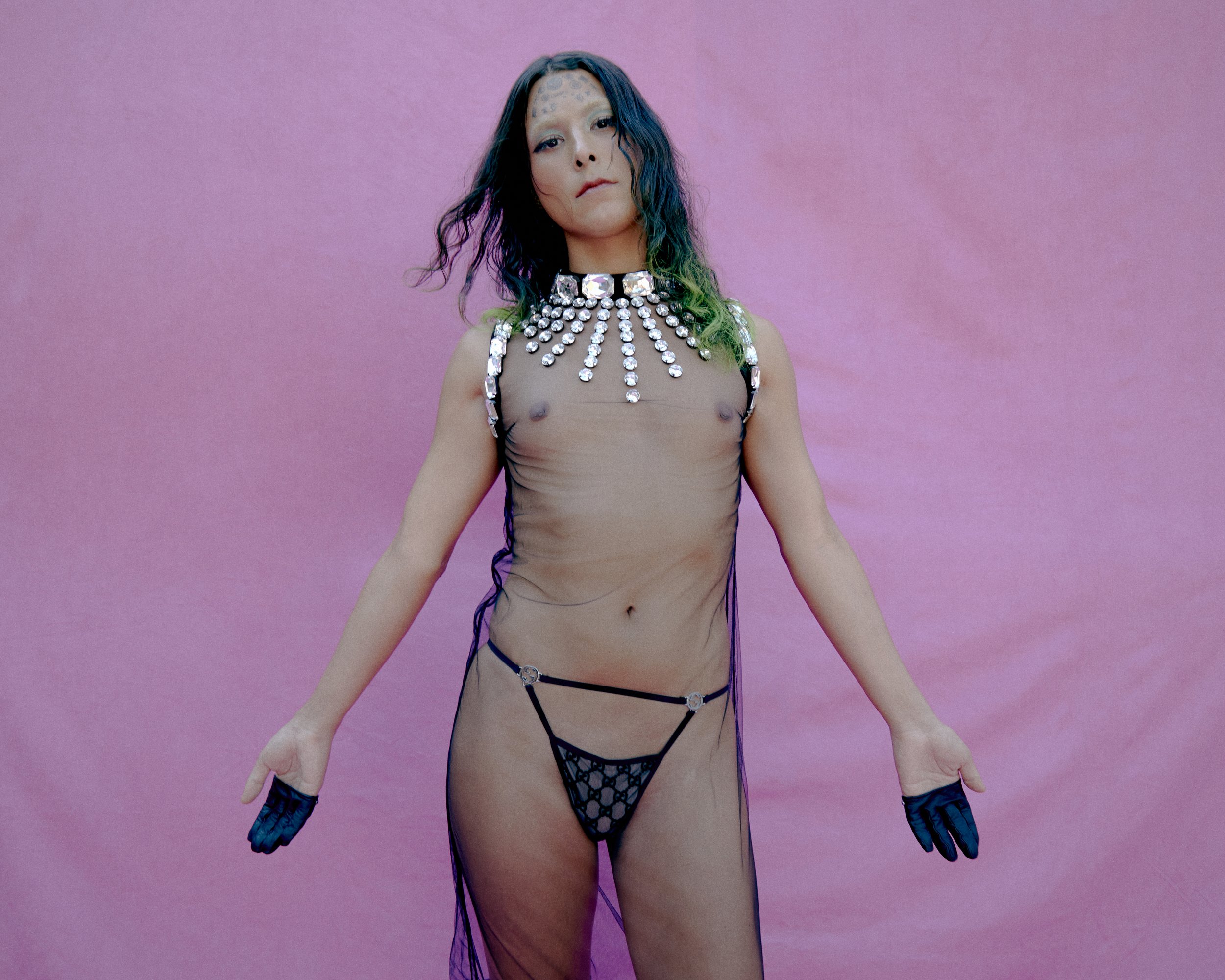The harshness of Medusa’s gaze transforms into a smile. Vitale blends Gianni’s bold use of color and desire for imagery with today’s rationality.
text by Alper Kurtul
photographs by Alec Charlip
Versace’s Spring/Summer 2026 preview took place in New York at the Tea Room of the Prince George Ballroom, located within the historic Prince George Hotel complex between Madison and Fifth Avenue. This century-old structure, with its Beaux Arts-inspired elegance, has been transformed into an event venue, and it is said that the women’s tea room, which opens onto the ballroom, and other former common areas have been restored and adapted for contemporary use.
The first thing felt upon entering the hall was the reality of a changing of the guard. Donatella Versace’s departure from creative management after nearly thirty years and the arrival of Dario Vitale, who worked for many years at Miu Miu building products and images, signified not just a change in name but a shift in perspective. The news that this transition was confirmed in March and that Vitale took over in April marked a turning point in terms of the brand’s future and potential strategic directions. Every detail seen while walking around the room signaled the tone of this new era.
Vitale’s background in the Prada school is evident in the rational structure and material discipline characteristic of Mrs. Prada. However, here, instead of harsh minimalism, an exuberance that winks at Gianni’s legacy has been chosen. The door opened by the Versace Embodied project had already paved the way for this direction. A line starting with a bronze relief of Medusa merges with the present through black-and-white portraits documenting the youth of Southern Italy, Collier Schorr’s intimate drawings, and Eileen Myles’ search for raw expression. Vitale’s softened use of Medusa in the preview gains a joy that flirts with pop art. This narrative becomes a manifesto on how the house’s codes have been updated.
The silhouette language rises above a powerful and controlled nostalgia. It returns with high-waisted pants, prominent shoulders, pleated fabrics, and layered stylization, reminiscent of Miami in the ’80s and ’90s. Suits that look like they jumped out of Don Johnson’s Miami Vice screen but fit today’s urban body stand out. Printed denim and silk pieces adorned with Marilyn Monroe portraits and Warhol-inspired Pop prints take center stage. This is both a direct reference to Gianni Versace’s 1991 Spring/Summer collection and a contemporary echo of the brand’s longstanding dialogue with photography, prints, and identity politics. On the accessories side, gold-toned surfaces and Greek key motifs create a vibrant exchange between antiquity and pop culture, while each silk blend fabric used on the prints is finished by hand. This craftsmanship is particularly evident in the undergarments, where hand-applied paint transitions and micro print transfers on the fabric layers make each piece unique. The human face motifs, inspired by archival portraits, are not printed but hand-painted directly onto the fabric, giving every garment a slightly different expression that feels intimate and alive, as if each carried the touch of its maker (except for Marilyn Monroe, some of the faces that may seem like celebrities actually belong to random people, which subtly forces the viewer to look closer and question what feels familiar). The mannequins used in the exhibition are original models from the Gianni Versace era, handmade in the Milan workshop in the 1980s. These mannequins perfectly reflect the Italian tailoring standards of the period and Gianni’s sense of form. With their handcrafted surfaces, the garments’ lines are displayed as if on a sculpture rather than a mechanical display; the warmth of the human body is preserved in the way the clothes are presented. Thus, the material of the past is transported to today’s stage, and the weight of craftsmanship combines with the energy of modern colors and forms to become a narrative of dynamic confidence.
In footwear, the first hints of the Onitsuka Tiger collaboration are visible as the signature move of the new era. Tai Chi-inspired, low-profile models and a loafer interpretation offer a taste of tailoring, where Japanese production precision meets Italian leather. This collaboration was a separate headline in the news flow of Vitale’s debut season and looks set to become a key file for sneaker enthusiasts in the coming season. The emphasis on Versace partnering with a sports shoe brand for the first time in the sneaker field clearly opens the brand’s door to the street.
Versace is reestablishing the relationship between myth and the body. The sculptural coldness of the gods gives way to a warmth closer to the human scale. The harshness of Medusa’s gaze transforms into a smile. Vitale blends Gianni’s bold colors and love of imagery with today’s clear sense of rationality. The styling feels fluid, mixing tailored pieces with soft layers that add movement and depth. Each look carries the energy of spontaneity, turning maximalism into something quietly human. This approach strengthens the brand’s relationship with the city and manages to remain wearable even in a hub of intensity like New York. The preview proves that grandeur can be conveyed not through ostentation but through measured assertiveness. Therefore, the expression of rebirth encompasses not only the new creative director but also the brand’s return to itself to find a fresh direction.
















